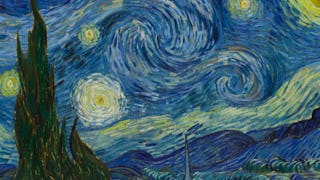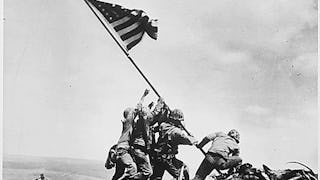In their ambition to capture “real life,” Japanese painters, poets, novelists and photographers of the nineteenth century collaborated in ways seldom explored by their European contemporaries. This course offers learners the chance to encounter and appreciate behavior, moral standards and some of the material conditions surrounding Japanese artists in the nineteenth century, in order to renew our assumptions about what artistic “realism” is and what it meant.

Cultivate your career with expert-led programs, job-ready certificates, and 10,000 ways to grow. All for $25/month, billed annually. Save now


Words Spun Out of Images: Visual and Literary Culture in Nineteenth Century Japan

Instructor: Robert Campbell
28,472 already enrolled
Included with 
(756 reviews)
What you'll learn
Differences between traditional Japanese art forms
A deeper understanding of Japanese perceptions of the self
Insights into how Japan as a nation state emerged to the forefront of “modernity” in the late nineteenth century
A rich lode of non-western cultural materials relating to gender
Details to know

Add to your LinkedIn profile
47 assignments
See how employees at top companies are mastering in-demand skills


Earn a career certificate
Add this credential to your LinkedIn profile, resume, or CV
Share it on social media and in your performance review

There are 4 modules in this course
One good way to gauge the distance between literary and visual culture in early modern Japan is to examine the ways in which painters and poets depicted their contemporaries. Portraits of samurai are especially rich in information about how men at the top of the social ladder wished to be “viewed” as physical entities, and how they expressed themselves as moral actors within society. In the first module, we will learn the basic formal aspects of samurai portraiture, and at the same time begin to interpret poems and prose inscribed onto the images themselves.
What's included
12 videos1 reading13 assignments
Visual images of women produced in Japan before the introduction of photography can be divided into two types: portraits of women who actually existed in society, and painted or printed images of idealized “beauties,” whose resemblance to physical reality was subsumed often to an intense interest in mode and situational aspect. Like samurai portraits, images of women, both real and imagined, would often be inscribed with texts which instruct viewers how to understand and appreciate them. In this module, we will overview several painted and printed images, and learn how contemporary viewers used these images and their texts as a tool to understand the world.
What's included
14 videos15 assignments
What methods did early modern Japanese artists and writers have at hand to “capture the moment,” and how did these methods influence the introduction and adaption of western photography in the mid-nineteenth century? In this module we will see how photographic modes of representation were assimilated into the literary tradition of portraiture, which was covered in modules 1 and 2.
What's included
8 videos9 assignments
Our final module traces the trajectory of the literary photograph from the end of the long nineteenth century into Japan’s modern era. Photographic images of the human figure in late nineteenth and early twentieth century Japan were often accompanied by literary writing inscribed either on the image itself, or on its reverse side. Modern novelists sometimes published photographs with short poems as captions. We will wrap up our course with a summary of how visual and written modes of representation colluded, and combined to produce powerful documents of social and psychological actuality.
What's included
9 videos10 assignments
Instructor

Offered by
Recommended if you're interested in Music and Art


The Museum of Modern Art


California Institute of the Arts


Google Cloud
Why people choose Coursera for their career




Learner reviews
756 reviews
- 5 stars
85.31%
- 4 stars
11.77%
- 3 stars
2.38%
- 2 stars
0.26%
- 1 star
0.26%
Showing 3 of 756
Reviewed on Nov 1, 2018
the lecturer is knowledgeable and engaging. it greatly enriched my appreciation of japanese arts and culture. i highly recommend it.
Reviewed on Jan 8, 2025
Easy to read and view lectures, clear photography, slides and personable presentation. Paced nicely for each module, variety of presentation ways.
Reviewed on Dec 15, 2018
i loved it! it was very detailed in terms of historical literature and photographic culture and the narrator really explained everything very well.

Open new doors with Coursera Plus
Unlimited access to 10,000+ world-class courses, hands-on projects, and job-ready certificate programs - all included in your subscription
Advance your career with an online degree
Earn a degree from world-class universities - 100% online
Join over 3,400 global companies that choose Coursera for Business
Upskill your employees to excel in the digital economy
Frequently asked questions
Access to lectures and assignments depends on your type of enrollment. If you take a course in audit mode, you will be able to see most course materials for free. To access graded assignments and to earn a Certificate, you will need to purchase the Certificate experience, during or after your audit. If you don't see the audit option:
The course may not offer an audit option. You can try a Free Trial instead, or apply for Financial Aid.
The course may offer 'Full Course, No Certificate' instead. This option lets you see all course materials, submit required assessments, and get a final grade. This also means that you will not be able to purchase a Certificate experience.
When you purchase a Certificate you get access to all course materials, including graded assignments. Upon completing the course, your electronic Certificate will be added to your Accomplishments page - from there, you can print your Certificate or add it to your LinkedIn profile. If you only want to read and view the course content, you can audit the course for free.
You will be eligible for a full refund until two weeks after your payment date, or (for courses that have just launched) until two weeks after the first session of the course begins, whichever is later. You cannot receive a refund once you’ve earned a Course Certificate, even if you complete the course within the two-week refund period. See our full refund policy.
More questions
Financial aid available,



